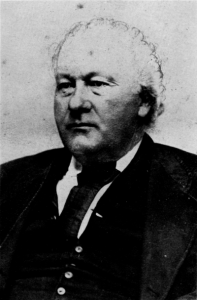On January 19, 1814, Captain William Wade and the Chasseur sailed from Port Deposit and escaped the British blockade of the Chesapeake Bay:
At half past meridian got under way from Point Look Out, and stood down the bay. Left the U.S. frigate Adams at anchor. At 3 P.M. discovered three sail standing up the bay by the wind—immediately beat to quarters and cleared ship for action. At 20 m. past 3, spoke the headmost, which proved to be a schooner from Norfolk for Baltimore—received from her information of the number and situation of the enemy below; hove too until dark. Off New Point, he heard the report of a gun; we supposed it to be the Admiral’s 8 o’clock gun; passed one 74 and two brigs at anchor. – At 10 P.M. discovered two large ships at anchor in the Middle Channel—supposed them to be frigates; hauled our wind and run close in with Cape Henry; finding we were not perceived, made sail and went to sea.
From the journal of the Chasseur, excerpted in Baltimore American, June 2nd, 1814, Maryland Historical Society.
Captain William Wade left Baltimore on January 15 and found little success as a privateer in the first several months of 1814. When Thomas Boyle (still making his way back to Baltimore after a bruising battle with the Hibernia) took over as commander in July, the Chasseur embarked on a remarkable cruise to the British Isles, capturing an astonishing number of prizes, and earning the nickname the “Pride of Baltimore” from the Niles Weekly Register.
Special thanks to Baltimore Heritage volunteer Dennis Lilly and the Maryland Historical Society for helping us share excerpts from the ship’s log from now through April. Continue to follow along for more updates on William Wade, Thomas Boyle and the Chasseur in the months ahead!

